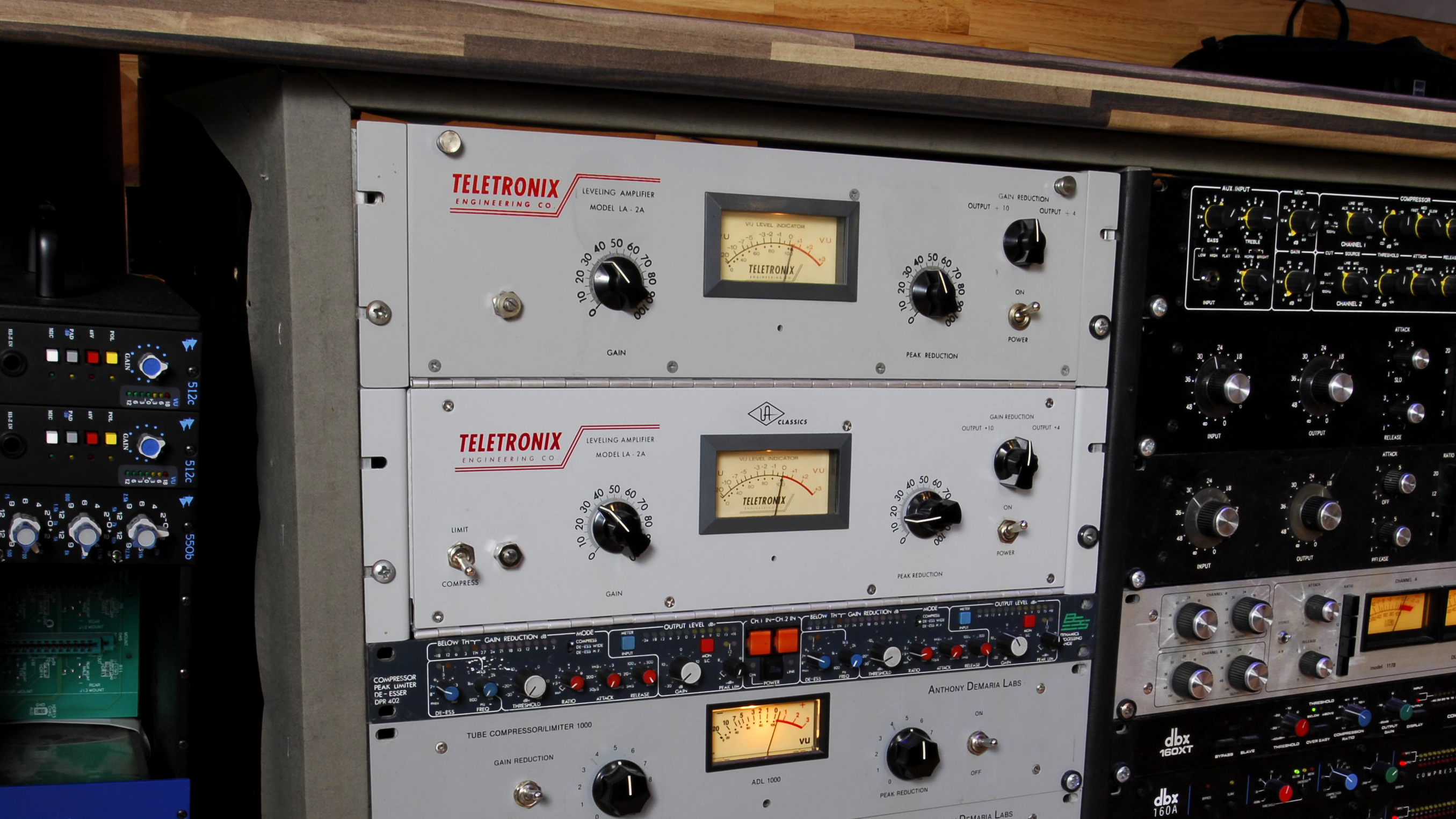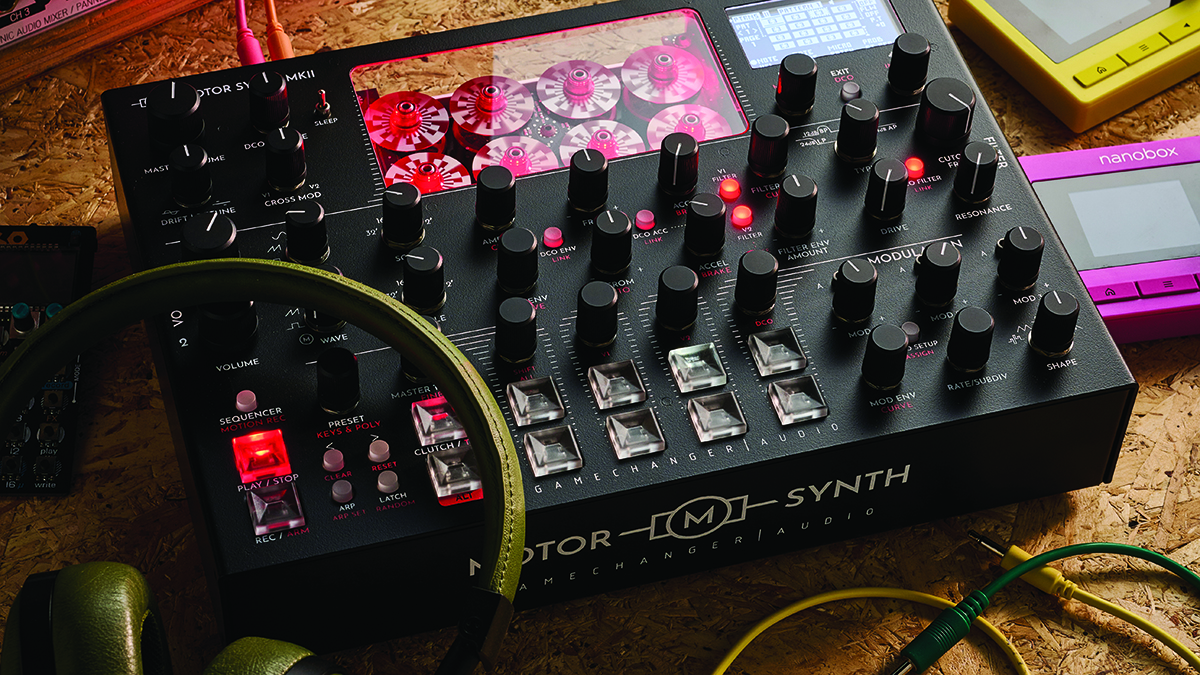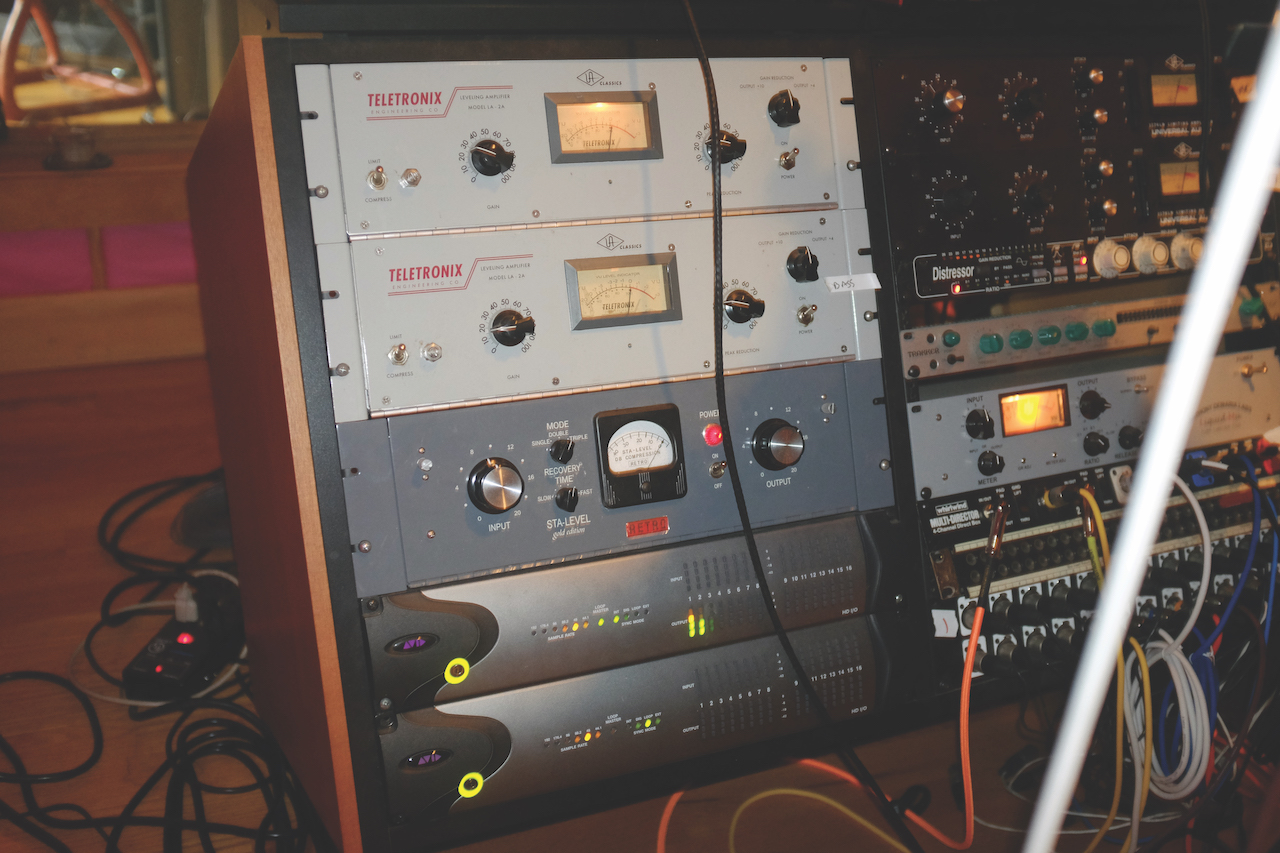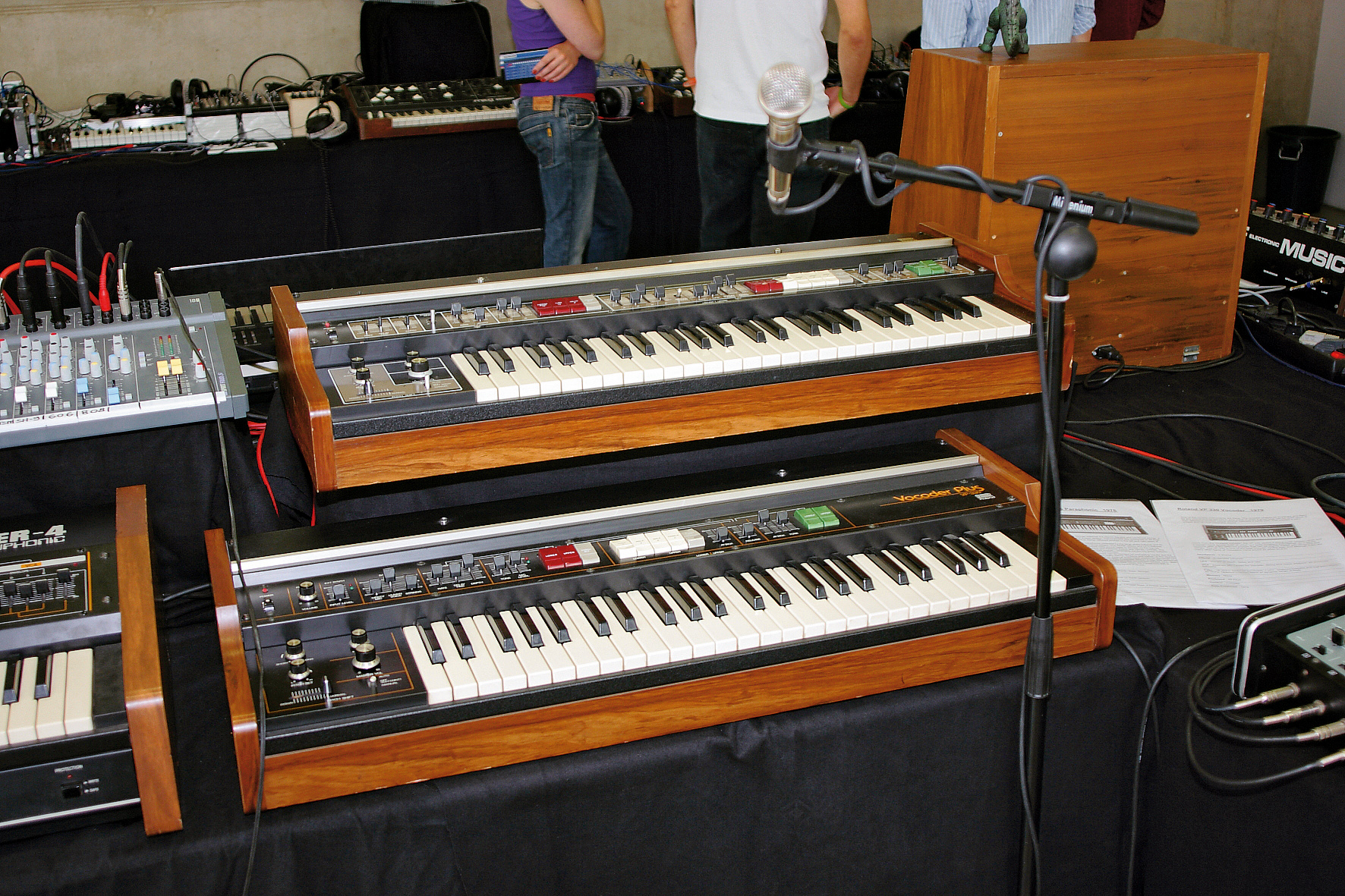From Nazi rockets to drone motors, the secret military history behind the studio gear we use today
How military conflict has fuelled the development of technology that’s now essential in modern music production

“War, what is it good for?” Edwin Starr famously sang in 1969 at the height of the Vietnam War, protesting America’s involvement in the ongoing conflict in Southeast Asia.
War may be a hideous endeavour and something that we’d all like to see the back of, but there’s no denying that much of the technology that we make use of today was originally born out of wartime development.
The same holds true for music technology. When you have governments throwing money at engineers to create the kind of forward-thinking innovations that can help win a war, a lot of that same technology ends up in the consumer sector in peacetime, often repurposed in surprising ways.
Who would have guessed that missile guidance systems and unmanned drones would have applications in music production? They do – and there’s more where that came from.
Magnetic tape
Magnetic tape was one of the most widely used storage mediums of the 20th century. Before the advent of digital, tape allowed us to record and save video, computer data and, yes, audio. Reel-to-reel tape, cassettes and DAT all benefitted from the technology, an invention that entered the world through military means - by way of Nazi Germany.
In 1928, a German engineer named Fritz Pfleumer, looking to improve on primitive wire recording, came upon the idea of magnetic tape. His early designs used paper, not tape, but after chemical companies AEG and BASF became involved, the reel-to-reel tape recorder that we’re familiar with today began to take shape. Named the Magnetophone K1, it debuted at the Berlin Radio Fair in August 1935.
It was none other than Bing Crosby who first realized the potential of tape in music and invested $50,000 in Ampex, ensuring it became the industry standard
The German military adopted a number of different models of the Magnetophone, and the technology eventually reached Major John T. Mullin, an electrical engineer in the United States Signal Corps. He brought a Magnetophone home to America after the war, where it was further developed by the company Ampex, which made use of U.S. government intelligence reports on German industries to advance its research.
Want all the hottest music and gear news, reviews, deals, features and more, direct to your inbox? Sign up here.
Interestingly, it was none other than Bing Crosby who first realized the potential of tape in music and broadcasting and invested $50,000 in Ampex, thus ensuring it became the industry standard.
Compressors
Compressors are an indispensable part of the mixdown process, allowing us to smooth out vocal takes, increase perceived loudness, and create volume ducking effects. You may have heard that compressors were first used in radio broadcasting to maintain consistency in vocal levels, but they had military applications too.
Originally developed for use on telephone lines, The Western Electric 110A was one of the first compressors. It used a variable resistor controlled by an electro-mechanical device to measure the signal level and keep it consistent, ensuring a reliable transmission. In 1937, the same company released the 110A Program Amplifier, designed to enhance radio broadcast transmission quality and prevent over-modulation, which could lead to distortion.
One scenario in which the clarity of signal broadcast was of the utmost importance was on the battlefield. The US military therefore employed compressors during the second world war to transmit orders, adopting specially-made gear like the Federal US Navy Signal Corps AM-864, which employed variable mu tube tech to boost intelligibility for ship-to-ship communication.
The connections continue. Jim Lawrence, who founded Teletronix, made use of his experience designing optical sensors for the Titan Missile Program at Cal Tech’s Jet Propulsion Laboratory, and his time in the US Navy as a radar operator in World War II, to design the T4 optical attenuator used in the legendary LA-2A Leveling Amplifier.
Ring modulators
We know ring modulators as devices and digital algorithms that can transform harmonic sounds into clangorous, inharmonic signals. Originally designed for telecommunications applications, ring modulators came to be used in music production via a brief detour in Nazi rockets.
Ring modulation is an example of frequency mixing, where two signals - a carrier and modulator - are combined, giving you a new combination of the sum and difference of the original signals. This is how ring modulation makes harmonic sounds become so discordant and metallic.
Although originally developed in the 1930s by Bell Labs – an R&D outfit responsible for inventions such as the transistor and laser – it was electronic instrument pioneer Harald Bode that first employed it in a musical context. After experiencing Bode’s Melochord, an early proto-synthesizer, in the late 1940s, Professor Meyer-Eppler, a physicist at the Phonetics and Communication faculty of the University of Bonn, asked Bode to make him a custom version with a ring modulator inside.
How did a German know about this obscure American telecommunications technology? Because the Nazis had been using it as part of their V2 rocket system
According to ZKM Karlsruhe, the digital custodian of the Harald Bode estate, this was the first time that Bode had heard of a ring modulator. His benefactor was interested in the then-new Elektrische Musik, and wanted to put it to musical use. How did a German know about this obscure American telecommunications technology? Because the Nazis had been using it as part of their V2 rocket system.
The V2 rocket program was Germany’s counterpart to the American Manhattan Project, the atomic research and development department headed by J. Robert Oppenheimer. The controls on the V2 rockets were actually ring modulators “because of the stability of voltage it provided,” the ZKM Karlsruhe site explains. Talk about a blitzkrieg bop.
Bode would later incorporate a ring modulator into his landmark 1960 Audio System Synthesizer, the first modular synthesizer ever developed. He would also design a standalone ring modulator in 1961, licensing two versions of it to the R.A. Moog Co, – which is how they ended up in late-1960s Moog Modulars. And, in another turn of events, Tom Oberheim would later modify Bode’s ring modulator design for his own first product, the Maestro RM-1A Ring Modulator, in 1970.
Vocoders
The vocoder is the go-to piece of gear for producers wanting to create synthetic voices, lending a robotic sheen to some of musical history’s most distinctive productions. You can find them in hardware and software variations, but like many other types of music production technology, the vocoder has a military history.
An engineer named Homer Dudley working at Bell Labs – the same R&D group that had a hand in ring modulators – commenced development on the vocoder in 1928. Dudley wasn’t aiming for Air-style synth voices, but rather to synthesize human speech. This evolved into a method for conserving bandwidth in telecommunications, with the human voice (the modulator) replaced by an alternative sound source (the carrier) and sent through a bank of band-pass filters, resulting in an artificial recreation of the original signal.
Although vocoders never became widely used in telephone communications, they did form part of a secure speech system used in World War II called SIGSALY, originally developed by Bell Labs (yes, them again) with assistance from Alan Turing, who famously cracked the Germans’ Enigma code. So-called channel vocoders remained in use in United States military communications until the early 1960s.
Harald Bode, who we last met working with ring modulators, had been intending to build his own vocoder since he customized the Melochord for Professor Meyer-Eppler. Incidentally, the professor actually used his hot-rodded Melochord as a carrier in some of the first musical vocoder experiments in Germany. Bode would finally get the chance to design his own Bode Vocoder in the late 1970s, with Moog rebadging it as the Moog Vocoder in 1978, later re-releasing it as the 16 Channel Vocoder in 2020.
Motorized synthesizers
So far, we’ve looked at music production technology born out of developments in the first half of the 20th century. One modern military sector that has unexpectedly contributed to recent musical instruments is drone tech, specifically brushless DC motors, a type of motor that has seen rapid development in recent years thanks to its use in military drone applications.

Two synthesizer companies currently feature these drone motors in their instruments. The first is Gamechanger Audio, whose Motor Synth incorporates eight electromotor oscillators made from custom-built brushless DC motors. These can generate four distinct waveforms via spinning optical discs controlled by the motors coupled with infrared sensors.
Another outfit working with drone motors is Melbourne Instruments. Rather than use them to generate sounds, the motors form the base of controller knobs on the company’s Nina and Delia synthesizers, and the Roto-Control MIDI controller. Aside from offering full recall, they’re also robust and reliable, the drone motors coupled with contactless 15-bit optical sensors replacing traditional potentiometers.
Adam Douglas is a writer and musician based out of Japan. He has been writing about music production off and on for more than 20 years. In his free time (of which he has little) he can usually be found shopping for deals on vintage synths.
You must confirm your public display name before commenting
Please logout and then login again, you will then be prompted to enter your display name.


